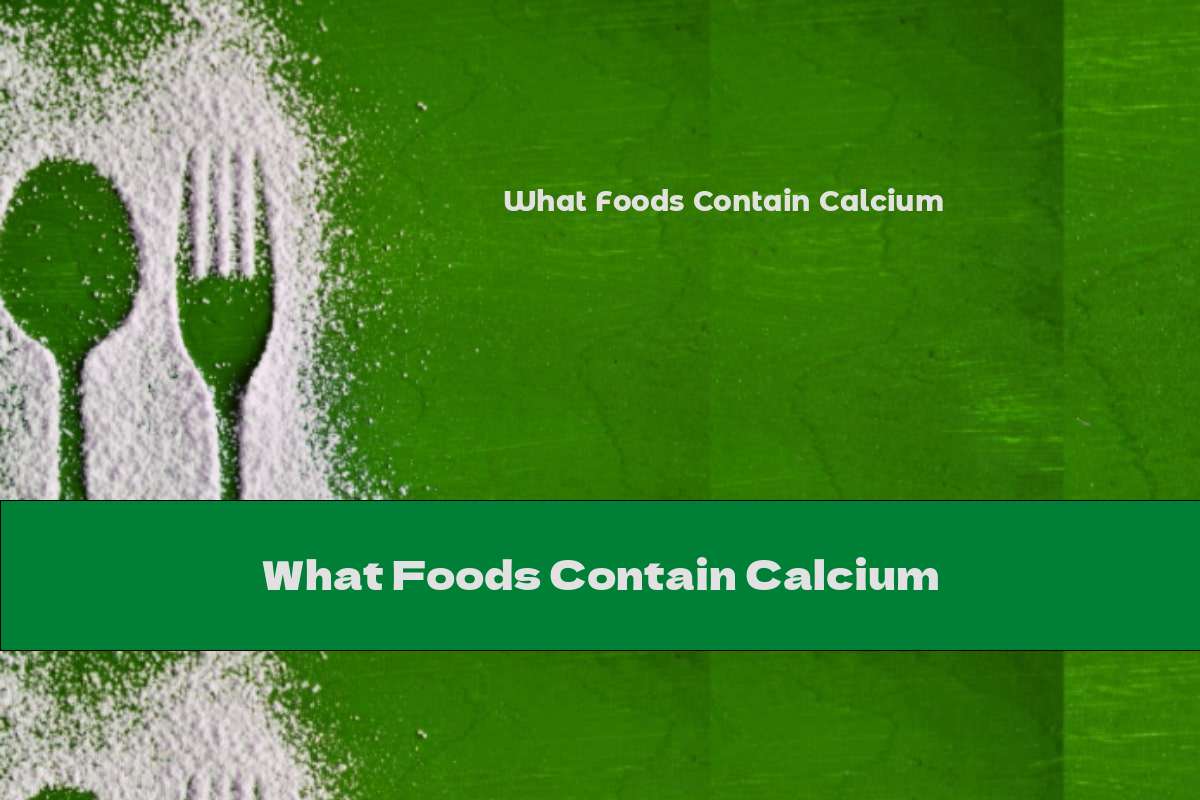What Foods Contain Calcium
 Author: Karen Lennox
Time for reading: ~3
minutes
Last Updated:
October 30, 2022
Author: Karen Lennox
Time for reading: ~3
minutes
Last Updated:
October 30, 2022

We all know that calcium is very important for health. Despite all this, many of us suffer from calcium deficiency. Its deficiency can be replenished with food. For your attention - products of animal and vegetable origin, rich in calcium.
We all know that calcium is very important for health. It is less known that our body contains the most of this mineral : it is made up of our bones and teeth, in addition, it plays an important role in the health of the heart, muscle and nervous systems.
Despite all this, many of us suffer from a lack of calcium . Its deficiency can be replenished both with the help of nutritional supplements (prescribed by a doctor) and with food. Calcium is primarily found in dairy products such as, but not limited to, milk, cheese, and yogurt. For example, seafood, greens, legumes, dried fruits, and tofu are also rich in calcium . For your attention - products of animal and plant origin, rich in calcium .
Seed
Seeds are tiny nutritional powerhouses. Some are rich in calcium , including poppy seeds, sesame seeds, celery, and chia seeds. In 1 tbsp. (9 g) of poppy seeds contains 126 mg of calcium , or 13% of the daily norm of the mineral .
The seeds also contain protein and healthy fats. Chia seeds are rich in plant-based omega-3 fatty acids. And sesame seeds contain 9% of the daily norm of calcium in 1 tablespoon, as well as copper, iron and manganese.
Cheese
Most cheeses are an excellent source of calcium . Parmesan is the leader among all, it contains 331 mg or 33% of the daily norm of the mineral in a piece of 28 g. Softer cheeses, for example, Brie, contain less calcium : 5% of the RDA in 28 g.
By the way, our body absorbs calcium more easily from dairy products than from plant sources.
Yogurt
In addition to the fact that yogurt is an excellent source of calcium , it also contains probiotics. 1 glass of natural yogurt contains 30% of the RDI of calcium , as well as phosphorus, potassium and vitamins B6 and B12. Interestingly, low-fat yogurt can contain even more calcium - up to 45%. But choose options without artificial flavors and added sugar.
Sardines and canned salmon
Sardines and canned salmon are rich in calcium thanks to their edible bones. A 90-g jar of sardines contains 35% of the RDA of the mineral , and the same portion of canned salmon contains 21%. These fatty fish also contain high-quality protein and omega-3 fatty acids, which are good for the heart, brain and skin.
Beans and lentils
Beans and lentils are rich in fiber, protein and trace elements. They also boast plenty of iron, zinc, folate, magnesium and calcium . Some varieties contain a decent amount of calcium . Boiled winged beans are the leader among them: 1 cup contains 25% of the DV mineral . It is followed by white beans, the same volume of which contains 13%.
Almond
Of all nuts, almonds are one of the richest in calcium : 22 pieces provide the body with 8% of the RDI. In addition to the mineral , nut consumption may help lower blood pressure, body fat, and other risk factors for metabolic disease.
Green
Kale, spinach and leafy greens are the record holders for calcium content among greens. For example, 1 cup (190 g) of cooked green cabbage contains 266 mg - ¼ of the total amount needed per day.
Edamame and tofu
Both tofu and edamame are rich in calcium . Just ½ cup of tofu contains 86% of the RDI of calcium , and 1 cup of edamame contains 10%.
Non-dairy drinks
Even if you don't drink cow's milk, you can still get calcium from calcium-enriched non-dairy drinks. 1 glass of soy milk contains 30% of the DV mineral , and orange juice - 50%. Other nut and seed based milks may contain even more calcium .
Fig
Dried figs are a treasure trove of antioxidants and fiber, and also contain a decent amount of potassium and vitamin K. In addition, 30 g of figs will provide the body with 5% of the DV of calcium - more than all other dried fruits.
Related Articles
- Grilled Foods: Nutritional Benefits, Recipes, and Tips for Healthy Grilling
- The Power of Beta-Carotene for Former Smokers: Benefits and Best Foods
- The Power of Salicylates in Nutrition: Benefits, Foods, and Recipes
- The Power of Fermented Foods in Nutrition: Benefits and How to Include Them
- The Ultimate Guide to Sulfite-Free Foods in Nutrition